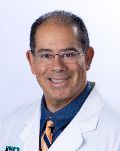Florida Sleep Apnea Center - In Your Local Area
Nibaldo P. Morales DMD
Appointments: (305) 448-9996

Nibaldo Morales D.M.D.
Nibaldo P. Morales DMD
2645 SW 37th Ave Ste 504
Miami, FL 33133




For a quality porcelain crown in the Coral Gables, FL area, Dr. Nibaldo Morales is known for natural-looking results. At Nibaldo P. Morales DMD, we use quality materials to restore your smile.
Your new tooth colored crown will blend in with the rest of your teeth. Our state-of-the-art techniques will make your smile look healthy and natural again.
At Nibaldo P. Morales DMD we offer a range of treatment options for sleep apnea. If snoring or obstructed breathing is a problem, call Dr. Morales today to learn how we can help you breathe easier.
Left untreated, sleep apnea can cause serious health problems, so contact us now to schedule an examination.
Here at Nibaldo P. Morales DMD, your comfort is our number one priority. We will do our utmost to put you at ease and keep you feeling relaxed and secure. Under the experienced leadership of Dr. Nibaldo Morales, our dedicated team of professionals is at your service to explain your treatment thoroughly and answer any questions you may have.
If you're looking for attractive porcelain veneers, Coral Gables area veneers dentist Dr. Morales can help. Our friendly team will evaluate your situation to make sure you're a good candidate for dental veneers.
Then we'll develop your individual plan for the process. Your cracked, chipped or discolored teeth will be transformed to look completely natural so you can enjoy your bright new smile.



More Sleep Apnea Dentists in the Miami, FL Area Near You
facialsurg.cc
Oral & Maxillofacial Surgery 2239 N. Commerce Pkwy Ste 2
Weston , FL, 33326-3294
Dr. Nadeem Ahmed, DMD
12720 S. Orange Blossom Trail Suite 22
Orlando, FL, 32837
(407) 240-2255
Doctor - Activate Your Free 1stSleepApnea Directory Listing
Pamela J Skaff D.D.S.
200 Solana Road
Ponte Vedra Beach, FL, 48334
Thomas Peak ,D.D.S. DMD P.C
4372 Commercial Way
Spring Hill , FL, 34606-1965


